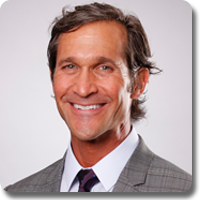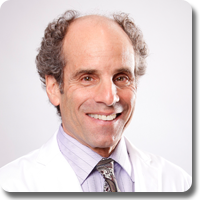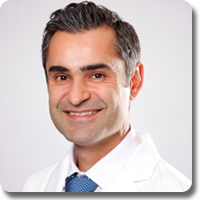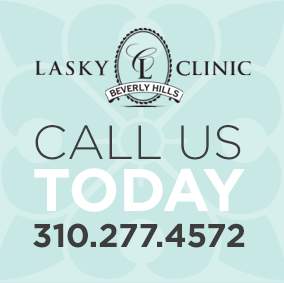Laser Resurfacing
If you’re more interested in fighting (or hiding) the signs of aging, one option you might consider is laser skin resurfacing. This procedure aims a light beam at various layers of the skin to try and repair the appearance of wrinkles, discolorations, scars or other age spots. After the procedure and some recovery time, you could be left with younger, smoother looking skin.
There are two types of lasers typically used in laser skin resurfacing: ablative and non-ablative.
Ablative Lasers
Ablative lasers remove the aged and damaged surface skin by vaporizing the epidermal layer down to the next level, the dermis. The body responds during the healing process by producing more collagen, which generates new layers of skin that are stronger and, ideally, look younger. Resurfacing occurs at the following 3 levels:
- Superficial (wounds from the stratum corneum through the papillary dermis)
- Medium (wounds of the upper reticular dermis)
- Deep (wounds of the midreticular dermis)
Pulsed and scanned CO2 laser systems were developed to reduce the thermal damage that occurs in skin tissue, these remove layers of sun-damaged skin in a more controlled manner. Erbium:YAG laser was also developed and its overall efficacy is comparable to pulsed and scanned CO2 laser techniques. Both these laser systems are “ablative” laser skin resurfacing techniques as they target mainly the top layers of skin (epidermis) but also affect the lower layers of skin (dermis).
Non-Ablative Lasers
Non-ablative lasers focus specifically on the the dermis which is the tissue underneath the skin. Laser wavelengths are used to target areas of concern without harming the surface, leaving the epidermis intact. In place of the damaged skin, younger-looking and clearer skin develops. The results are not as effective as with ablative laser resurfacing but the excellent safety profile and rapid recovery post-treatment have made these systems very popular. These systems have been divided into 3 main groups, mid-infrared lasers and the two visible light lasers, the pulsed dye laser (PDL) and intense pulsed light (IPL) systems.
Who is suitable for laser resurfacing?
People with mild, moderate or severe facial wrinkles and sun-damaged skin can all benefit from laser resurfacing. Those who are concerned about the risks of complications, and who wish to avoid long recovery times are the best candidates for non-ablative laser resurfacing. However, they must understand that results may not be as effective as ablative resurfacing.
All wrinkles are reduced, but those caused by the sun, especially those around the eyes and lips respond best. It is never too late – or too early – to treat wrinkles once they are established. Acne scars and facial scars from surgery or trauma may be reduced but very deep scars cannot be completely removed. Many benign skin growths and scaly patches on the face and elsewhere are removed with ease.
Dark skinned and tanned patients may experience some dyspigmentation of the skin after treatment with non-ablative laser therapy. A test spot should be performed in these patients and they should avoid direct sunlight and use sunscreens after treatments.
Is laser resurfacing an alternative to face lifts?
The procedure does provide a general ‘lift’ to the face, but a face lift is necessary to reverse advanced sagging of the kins of the face. Wrinkles on the lips and around the eyes usually do not respond to face lifting but respond well to laser resurfacing. In some instances both procedures are necessary to achieve the best results.
Will it hurt?
This depends on the type of laser resurfacing being used. Ablative laser treatments are typically more painful than non-ablative laser treatments.
When treating small areas topical anesthetic agents usually applied when using ablative laser systems. For larger procedures, in addition to topical anesthetics, injectable or inhaled local or regional anesthetics may also be used.
Non-ablative laser resurfacing is minimally painful and may not require any anesthesia. If necessary, topical anesthetic agents are used and applied one hour before the start of the procedure. Cold packs may also be applied immediately after treatment to minimize any discomfort.
How much time off is necessary following the procedure?
The huge advantage of non-ablative laser resurfacing is that there is little, if any post-recovery period. In most cases patients can apply makeup and return to normal daily life immediately following treatment.
In contrast, ablative laser resurfacing is associated with a long post-recovery period. There may be swelling, redness, exudation and sloughing of the treated area. For the first few days’ treatment with ice packs and keeping the raised at night should help. Healing is greatly aided by vinegar soaks the first couple of days. In some cases an occlusive healing ointment is preferred as it improves patient comfort and has shown to speed up the growth of new skin. Usually it takes two weeks to heal completely, with a range from one to four weeks depending on the treatment performed and the depth of skin removal. After two weeks, it is possible to wear camouflage make-up. Sun protection with a non-irritating sunscreen is vital until the redness subsides completely.
What are the results?
In most cases the results are a moderate to marked reduction in facial lines and wrinkles, a more even skin tone and texture, and fresher, healthier-looking skin. Ablative laser resurfacing therapy produces the best result and is still considered the gold standard against which all other facial rejuvenation systems are compared. Although the results with non-ablative laser therapy are not as significant as those seen with ablative laser therapy it has the huge advantage of low risk and rapid recovery.
The Surgeons









